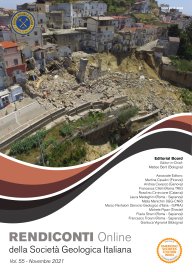

Remote sensing applications for the assessment of the geomorphic response of fluvial systems to the Holocene Climate Changes
Giulia Iacobucci
Earth Sciences Department, SAPIENZA University of Rome, Roma, Italy.
Corresponding author e-mail: giulia.iacobucci@uniroma1.it
DOI: https://doi.org/10.3301/ROL.2021.11
Volume: 55/2021
Pages: 20-28
Abstract
During the Holocene, the Tigris-Euphrates river system (Lower Mesopotamian Plain) was characterized by a complex morphodynamic due to climatic fluctuations, shoreline shifting, and human activities. Within a wide and barren floodplain with low elevation ranges, a remote sensing multi-sensor approach is suitable to identify the main geomorphological features and associated geomorphic processes. Optical and multispectral imagery (TerraColor and Landsat 8) are adopted for the preliminary visual inspection and the computation of multispectral indices (NDVI and Clay Ratio), as well as for the supervised classification. The topographic analysis of the micro- relief is integrated reclassifying two DEMs (AW30D30 and GDEM2) to highlight the peculiar configuration of the drainage system, which channels are several meters above the surrounding floodplain. This approach allows the investigation of the study area through large and medium scale, identifying active and abandoned channels, discerning between active and abandoned avulsion processes and distinguishing crevasse channels, levees, and deposits. In like manner, human features are recognized, allowing the evaluation of human- environmental interactions.
Keywords
Remote sensing, multispectral analysis, supervised classification, topographic analysis, Lower Mesopotamian Plain, avulsion processes, crevasse splays.
Get Full Text